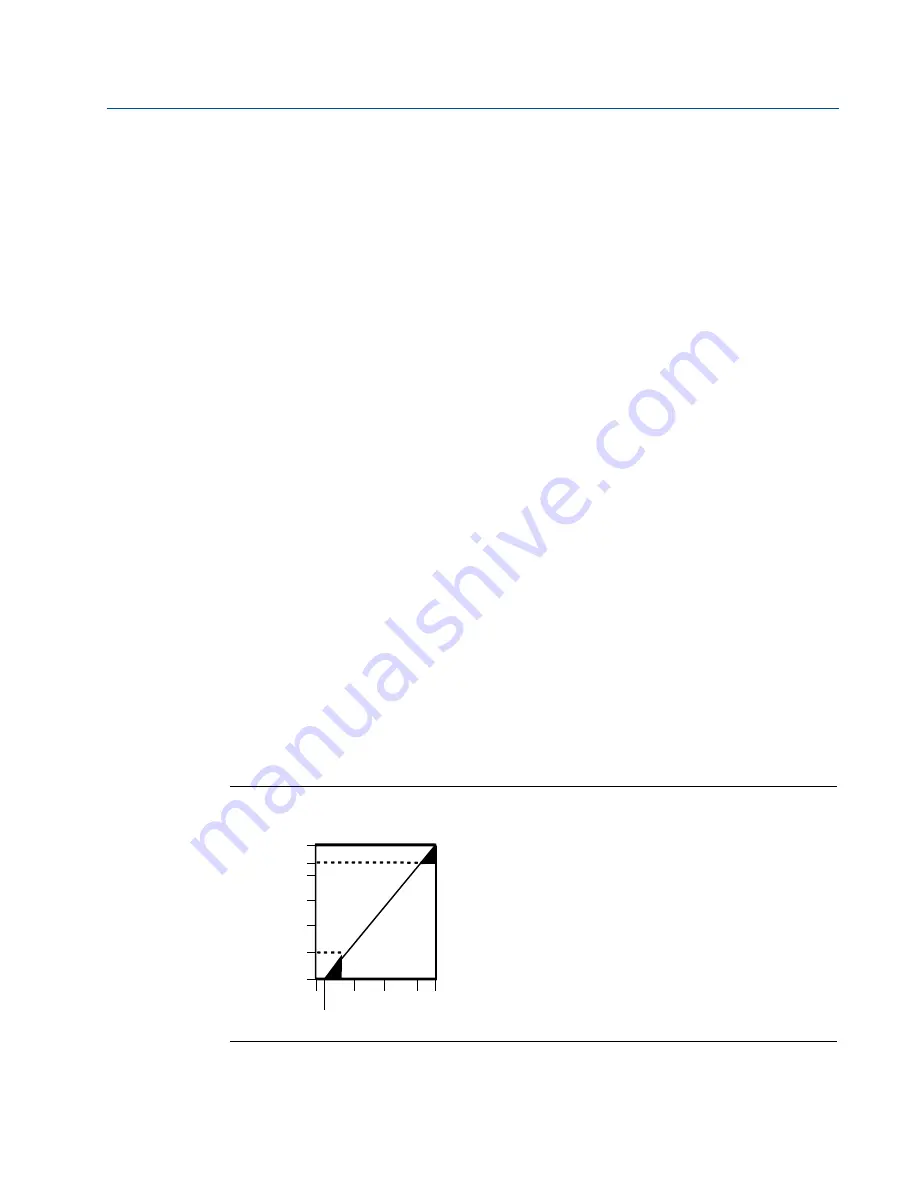
18
Reference Manual
00809-0100-4825, Rev CB
Section 2: Installation
March 2014
Installation
Lead wire imbalance seen by the transmitter = 0.5
Pt100 2-wire RTD:
Lead wire resistance seen by the transmitter = 150 m × 2 wires × 0.025
/m = 7.5
2.7
Power supply
To communicate with a transmitter, an 18.1 Vdc minimum power supply is required. The power
supplied to the transmitter should not drop below the transmitter lift-off voltage (see
). If the power drops below the lift-off voltage while the transmitter is being
configured, the transmitter may interpret the configuration information incorrectly.
The dc power supply should provide power with less than 2 percent ripple. The total resistance
load is the sum of the resistance of the signal leads and the load resistance of any controller,
indicator, or related pieces of equipment in the loop. Note that the resistance of intrinsic safety
barriers, if used, must be included.
Figure 2-8. Load Limits
Basic error
0.5
0.00385
/
C
100
----------------------------------------------------------------------------------
1.3
C
=
=
Error due to amb. temp. var. of
25 °C
0.0039
/
C
25
C
0.5
0.00385
/
C
100
-------------------------------------------------------------------------------------------------------
0.13
·
C
=
=
Basic Error
Lead Wire Resistance
Pt
R
o
----------------------------------------------------------
=
Error due to amb. temp. variation
Cu
T
amb
Lead Wire Resistance
Pt
R
o
-----------------------------------------------------------------------------------------------------------------
=
Basic error
7.5
0.00385
/
C
100
----------------------------------------------------------------------------------
19.5
C
=
=
Error due to amb. temp. var. of
25 °C
0.0039
/
C
25
C
7.5
0.00385
/
C
100
-------------------------------------------------------------------------------------------------------
1.9
C
=
=
4–20 mA dc
1322
1100
1000
750
500
250
0
10
12.0
20 30
40
42.4
Load (O
hms)
Supply voltage (V dc)
Operating
region
Maximum load = 40.8 x (Supply voltage – 12.0)
















































